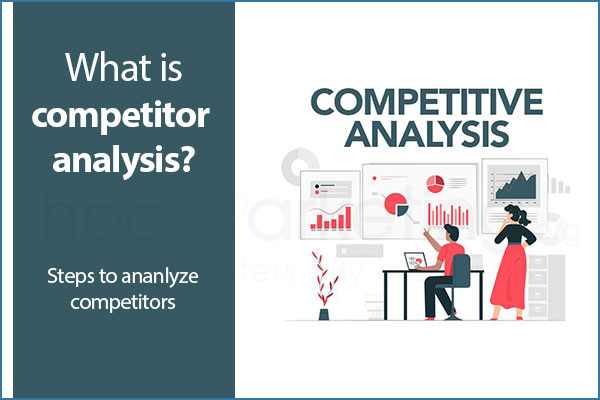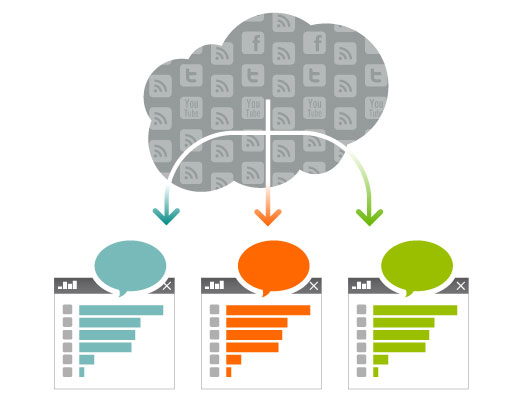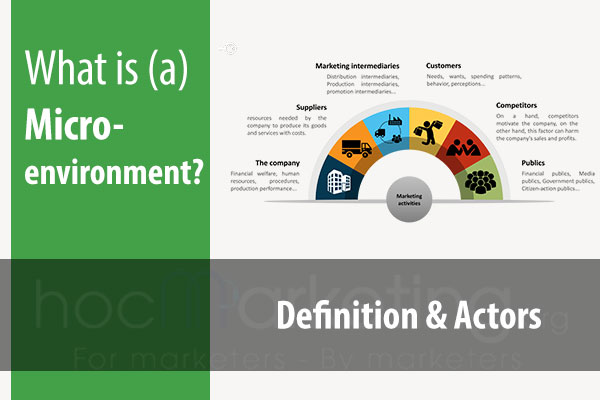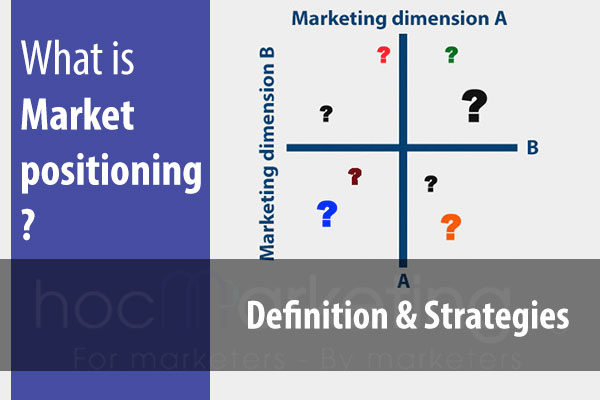
What is competitor analysis? Steps to analyze competitors

In Marketing, competitor analysis to help businesses is extremely important. The process of analyzing and researching competitors in Marketing includes 3 steps: Identify competitors...
What is competitor analysis?
Competitor analysis is an activity that includes observing, collecting information and data about competitors, and then synthesizing them into secondary data for the purpose of studying strengths, weaknesses, advantages. and the risk of competitors compared to the business, thereby helping businesses have a better view of their competitors as well as come up with appropriate marketing strategies based on research results.
"Master yourself, master the enemy". The proverb from "Sun Tzu of War" has proven its correctness not only in war, but also in daily life activities, including business activities. Competitor analysis helps businesses determine their position in the market they operate, thereby helping them have appropriate directions to maintain and develop market share.
The process of analyzing and researching competitors in Marketing
1. Identify competitors
At this stage, the analyst's job is to list the names of competitor companies, along with each competitor's respective products & services.
Often times, the job of identifying competitors seems easy. In a small & narrow scope, a business can identify its competitors as well as the products & services that these competitors provide to their target customers. In some other cases on a large scale, it will be much more difficult to identify all competitors because of factors such as quantity, geographical location, language barriers, etc.
The criteria to identify a competitor is based on the products & services that the competitor offers, as well as the target customers and that the competitor targets.
During this period, businesses need to avoid falling into the state of Marketing Myopia, which is a common name for cases of marketing mistakes, when businesses only focus on sales activities (products & services). service) I have but forget to focus on the benefits and experiences that the product or service brings.i. One of the prime examples is camera film maker Kodak which lost its market share to Fuji after the introduction and wide distribution of digital cameras.
2. Research and evaluate competitors
After listing all competitors of the enterprise within the defined scope, the next job is to evaluate competitors through the following criteria: Market share, operating scale, competitive advantage competition (strengths), weaknesses, strategies that competitors are using.
Market share
The number of market share holdings will roughly tell the position of that competitor on the market map, when compared to your own market share, you will know your relative position compared to the competition. player. In Marketing, the business holding the largest market share will be called the "Market Leader", the second will be called the "Market Challenger", the rest will be called the "Market Follower". Some businesses only focus on serving a very small market share but with different needs and wants, which will be called "Market niche".
Operational scale
The assessment of the scale of operations will help businesses know the potential of human resources and finance of their competitors so that businesses can have a basis to choose appropriate competitive strategies.
Competitive advantage (strengths)
Identifying competitors' competitive advantages is an extremely important stage when assessing competitors, including the competitive advantage of products & services, and other strengths of the business such as human resources. , finance... From this basis, enterprises can choose to face off directly (towards the same competitive advantage but outperform the competition) or avoid it (towards another competitive advantage). .
Weaknesses
Weaknesses of competitors are a useful document for businesses to exploit and incorporate into their competitive strategy. Some large enterprises can take advantage of this weakness to remove competitors from the target market.
Strategies that competitors are using
It is impossible to have complete and complete information about the strategies that competitors are applying because most of it is inside information. However, some of the public information that you can gather, partly tells the strategies that competitors are adopting. For example, Apple every year always applies a skimming price strategy for new iPhone lines launched into the market.
Such information can be useful for orienting the marketing strategy of the business
3. Classifiy and screen competitors
After the research and evaluation process, the final stage is to classify and screen competitors. In a market with a large number of competitors, the screening and classification will help businesses save a lot of time for later marketing stages.
First of all, businesses need to filter out which competitors should confront, and which competitors should avoid. This stage will be very important if the business itself has just entered the market not long ago, the potential is not strong.
Regarding the classification of competitors, enterprises can follow the following criteria:
- Geographic location: Competitors that share a common market share in a defined geographical area.
% market share holding: Like in stage 2, businesses can classify competitors into groups: Market Leader, Market - Challenger, Market Follower, Market Niche.
- Strengths and weaknesses: Competitors have similar strengths and weaknesses.


















